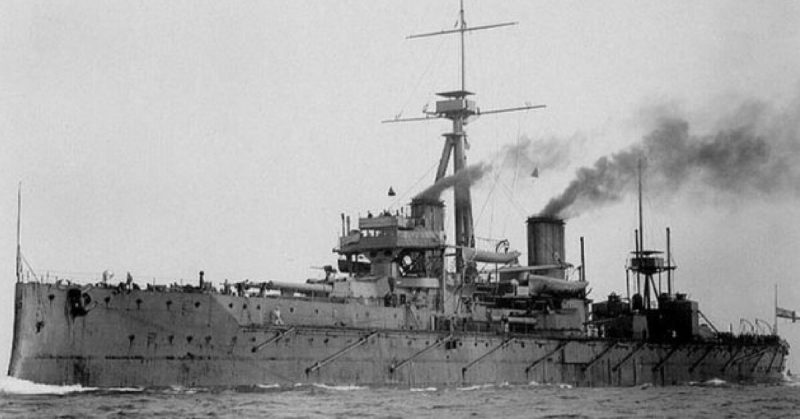In 1906 Great Britain created a battleship design that would leave the rest of the world in awe. The HMS Dreadnought made such an impact in the naval arena that after its introduction all ships were referred as the pre-Dreadnought and Dreadnought era models.
It was the first ship to employ the “all-big-gun” armament scheme, which introduced more high-calibre guns than had ever been seen before. The steam turbine propulsion enabled the ship to extract thermal energy from steam, used to run its four screw propellers. This system was a vast improvement on the steam engine, as it produced more power, was more reliable, and was considered to be “cleaner.”
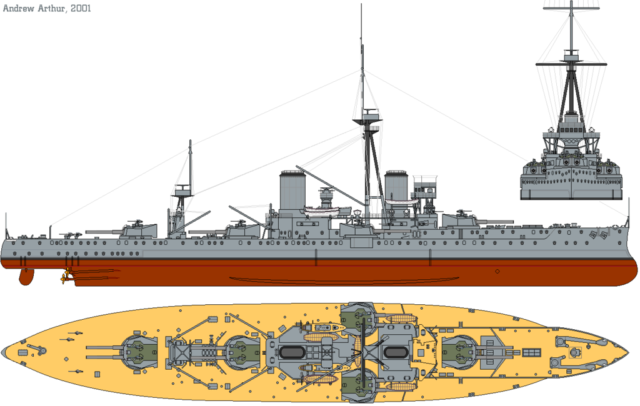
The construction of HMS Dreadnought started an incredible arms race, primarily between Great Britain and Germany. Once the contest started, it spread all around the world. Most notably in South America, between Brazil, Chile, and Argentina. The Brazilian Navy imported Dreadnought-class ships, leading the modernization of South American navies. That arms race is today considered to be the overture to the First World War.
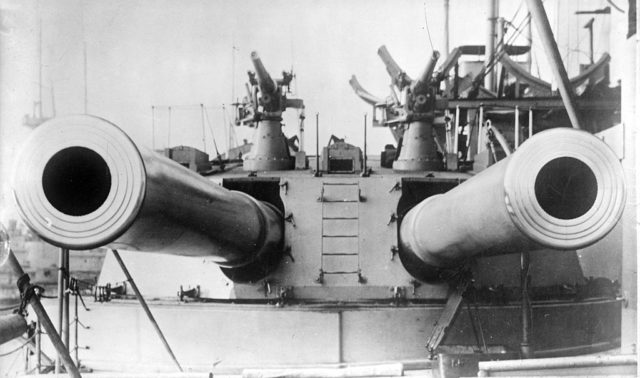
The fearful main armament of the Dreadnought was positioned into five twin gun turrets which mounted the 45-calibre BL 12-inch Mark X gun. They were cutting edge regarding the lengthening of gun barrels, enabling the projectile to reach maximum velocity.
Three of the turrets were set up along the centerline of the ship, with one being located forward on the deck. The two aft turrets were separated from each other by a torpedo control room which was located on a small tripod mast.
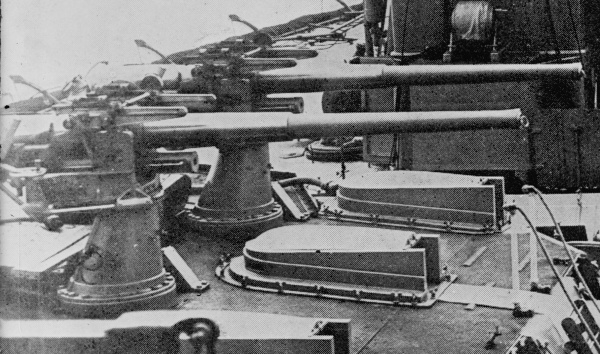
As well as the Mark X, the Dreadnought initially held a serious secondary armament. There were twenty-seven 50-calibre, 3-inch (76 mm) 12-pounder 18 cwt Mark I guns. Given the development of military aircraft use, the HMS Dreadnought was equipped with two QF 6 pounder Hotchkiss AA guns capable of achieving a maximum depression of 8° and a maximum elevation of 60°.
They were added to the ship’s arsenal in 1915 and mounted on the quarterdeck. In the following year, the Hotchkiss guns were replaced by QF 3-inch 20 cwt guns on high-angle Mark II mounts, as the threat from the air was becoming more and more dangerous as WWI progressed.
In addition to all this, the ship contained five submerged torpedo tubes equipped with 18-inch missiles.
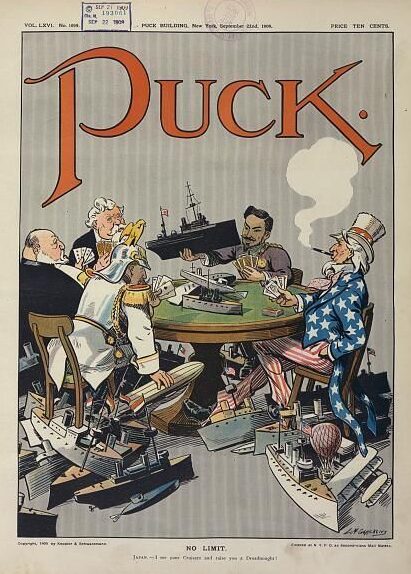
Although the thought at the time was “bigger is better” and nobody cared for “less is more,” the Dreadnought was too heavily armed. The blast damage from the ship’s main and secondary armaments was significantly jeopardizing the safety of the crew and the condition of the ship.
For this reason, the number of guns was reduced to twenty-two, as it was the only way the ship was able to function without causing damage to itself.
It was considered to be top notch before the war, serving as the flagship of the British Navy in the period between 1907 and 1911. The HMS Dreadnought represented British rule over the world’s oceans.
However, this giant had not seen much action during its service years and was used mostly as an instrument of propaganda. It was responsible for only one kill; the ramming and sinking of a German submarine, SM U-29, on March 18, 1915. The ship was being refitted during most of 1916, and so missed the greatest naval battle of WWI, the Battle of Jutland.
The former pride and glory of the British Empire was sold in 1920 for scrap for a mere 44,000 pounds.
